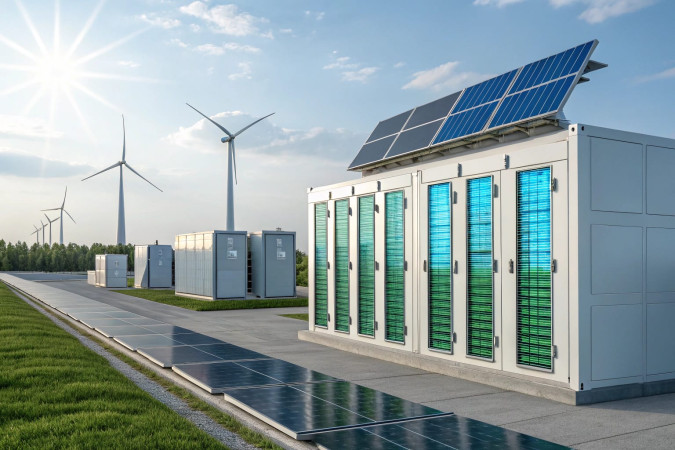
Follow India Renewable Energy News on WhatsApp for exclusive updates on clean energy news and insights
MENA’s Renewable Energy Surge: 2030 Targets and Key Developments
Feb 26, 2025
The Middle East and North Africa (MENA) region has seen rapid growth in renewable energy, reaching 30.3 GW of installed capacity by the end of 2024—a 119% increase since 2020. According to Dii Desert Energy's "Renewables, Hydrogen, and Energy Storage Insights 2030" report, the UAE leads the region with 6.3 GW, followed by Egypt (4.6 GW) and Saudi Arabia (4.5 GW). The UAE’s leadership is largely attributed to the Mohammed bin Rashid Al Maktoum Solar Park, which has contributed significantly to the country's 5 GW of solar capacity.
Saudi Arabia has the most under-construction projects, including the 2,030 MW Al Shuaiba 2, the largest solar project in MENA. Meanwhile, Oman plans to commission its Manah 1 and 2 solar projects in 2025, each with 500 MW capacity. The region is also advancing in rooftop solar, with over 600 MW expected by the end of 2024.
Wind Energy Growth
MENA’s wind power capacity has reached 6.2 GW, with Egypt and Morocco leading at over 2 GW each. The UAE installed 100 MW of wind projects across four sites in 2023. A significant pipeline of 15 GW of wind projects is in development, including a major 10 GW project in Egypt by Masdar.
Hydrogen Projects Expanding Rapidly
The region has seen a surge in hydrogen projects, rising from 75 in 2023 to 117 in 2024. Nearly 90% of these projects focus on green hydrogen, with the rest on blue hydrogen. The projected production capacity ranges between 30 to 40 million tons per year. Egypt has the most hydrogen projects in the pipeline (29), and the region’s total planned electrolyzer capacity is estimated at 200-230 GW, with most projects expected to be operational after 2030.
Energy Storage Developments
Energy storage in MENA is still in its early stages, with nine operational projects totaling 13,000 MWh, primarily using battery energy storage systems (BESS). The region has 11 upcoming projects, including two pumped hydro storage systems, which will add 16,750 MWh of capacity. Saudi Arabia is leading in storage project development, with its 500 MW/2,000 MWh Bisha BESS project commissioned in early 2025. The country, along with the UAE and Morocco, is tendering a total of 25,000 MWh in new storage projects, all of which are BESS-based.
MENA’s 2030 Renewable Energy Outlook
The MENA region aims to install 236 GW of solar and wind capacity by 2030. Based on the current project pipeline, around 131 GW could be achieved, with 115 GW expected from solar PV alone. To meet the target, an additional 40 GW of solar projects must be planned and executed in the next five years. The onshore wind target stands at 75 GW, with the current pipeline at 50 GW, including two massive 10 GW projects in Egypt.
Saudi Arabia is set to play a crucial role, contributing nearly half of MENA’s target with 100-130 GW of renewable energy by 2030. Oman aims to reach 3.8 GW (30% of its energy mix) by 2028, while Egypt targets 45 GW, with wind energy contributing 28 GW. MENA is also eyeing a production target of 10 million tons per year (MTPA) of green hydrogen by 2030, requiring an additional 128 GW of renewable capacity.
The renewable energy sector in MENA continues to grow rapidly, attracting investment and new projects. In 2024, TotalEnergies and Aljomaih Energy & Water secured a 25-year power purchase agreement for Saudi Arabia’s 300 MW Rabigh 2 solar project, further strengthening the region’s renewable energy ambitions.